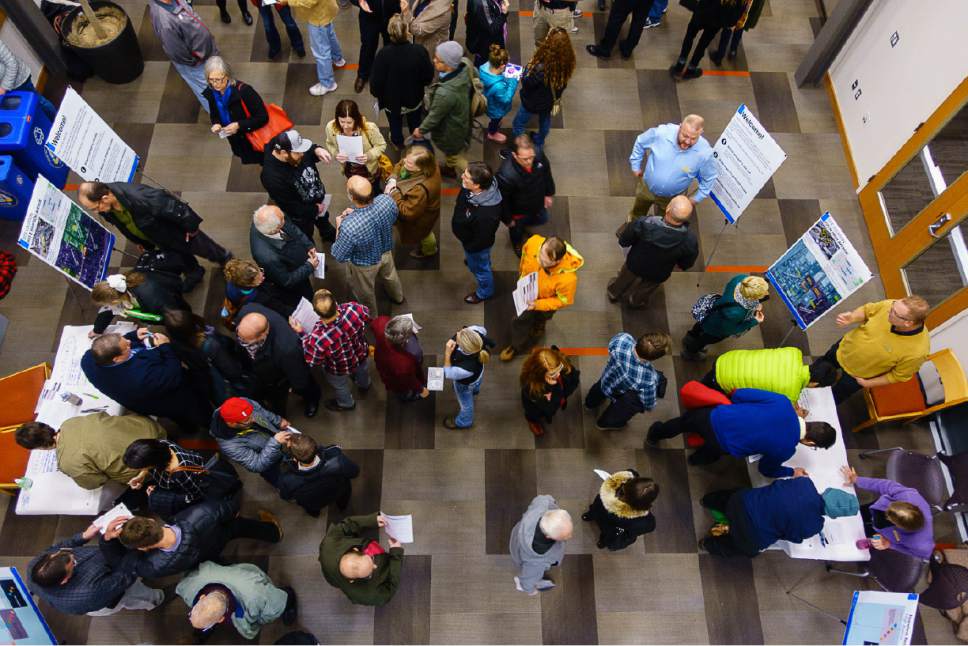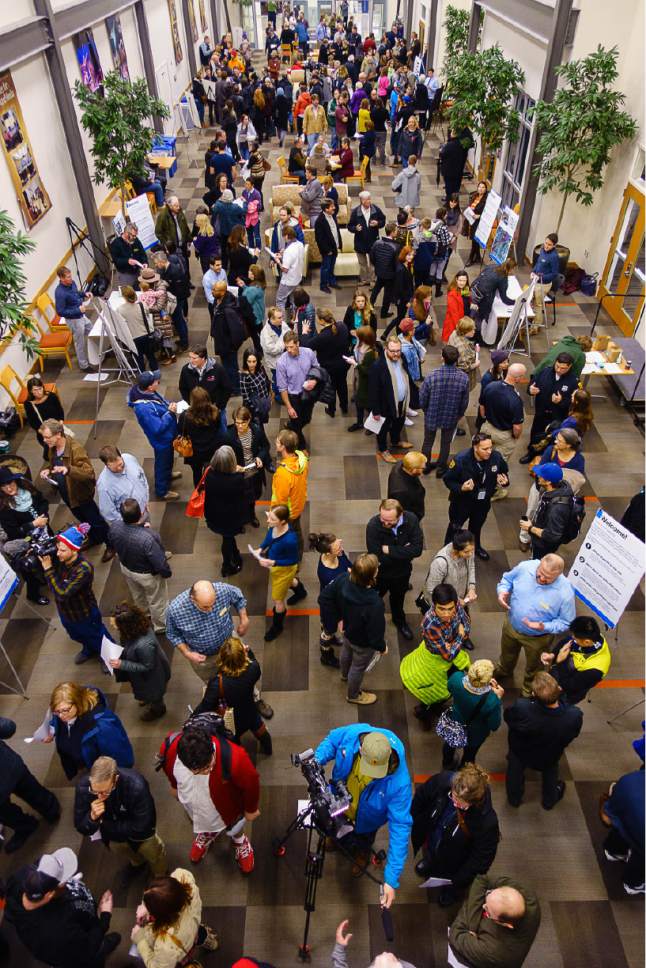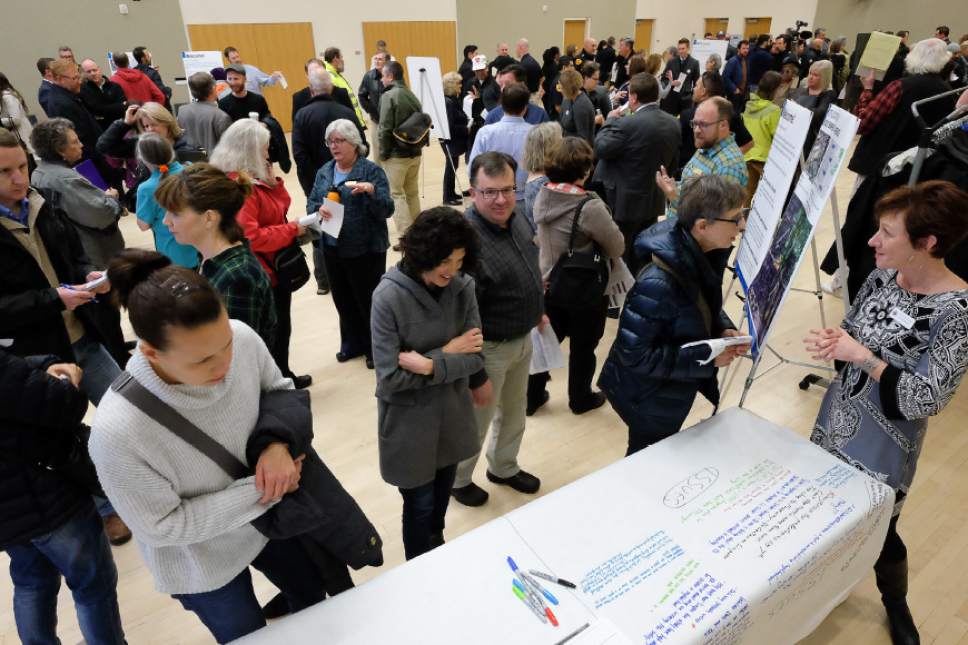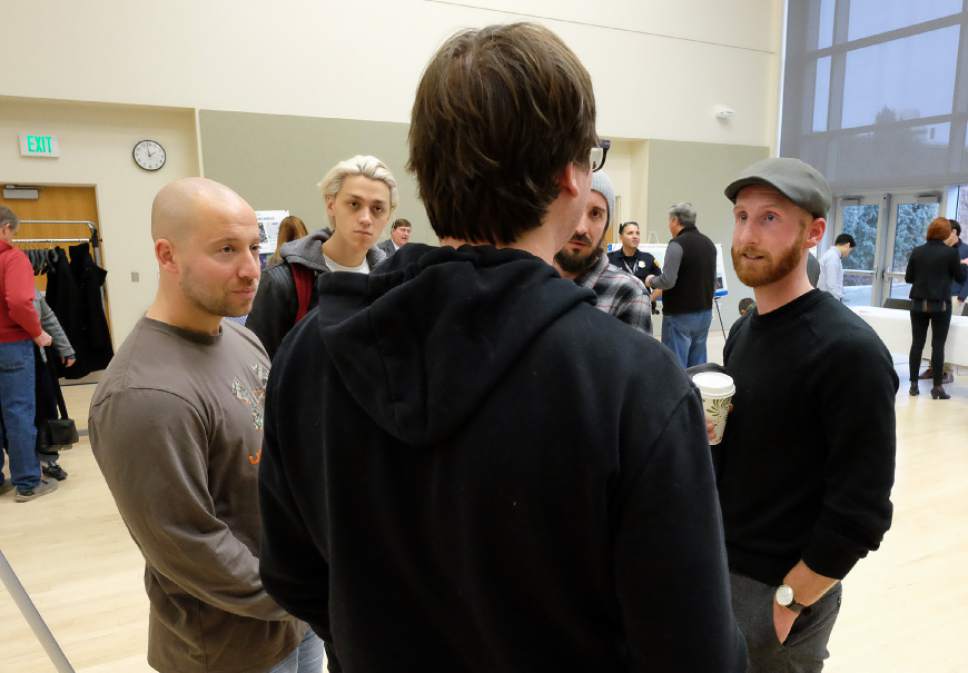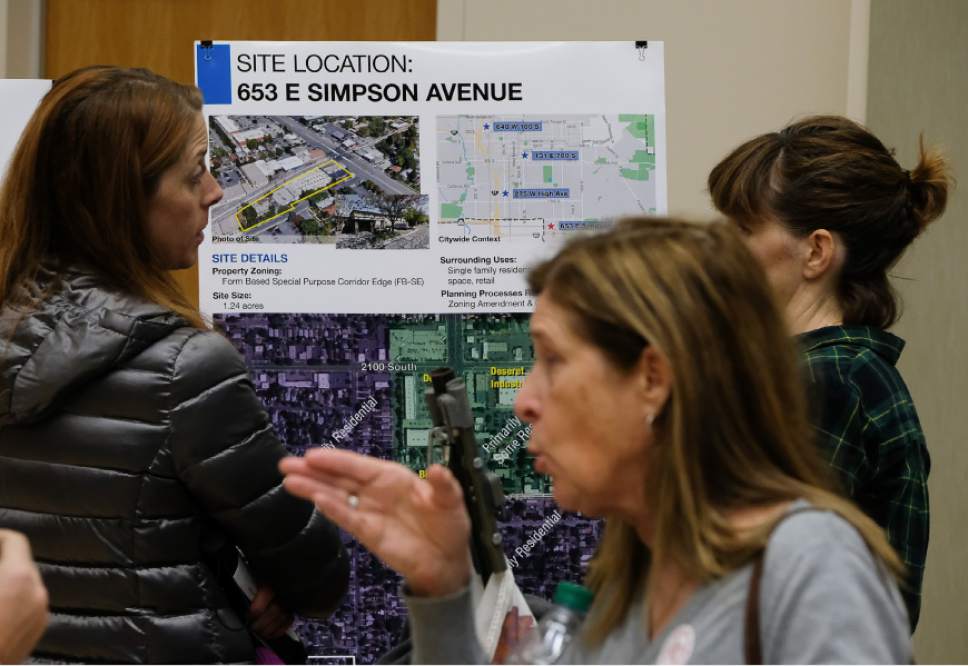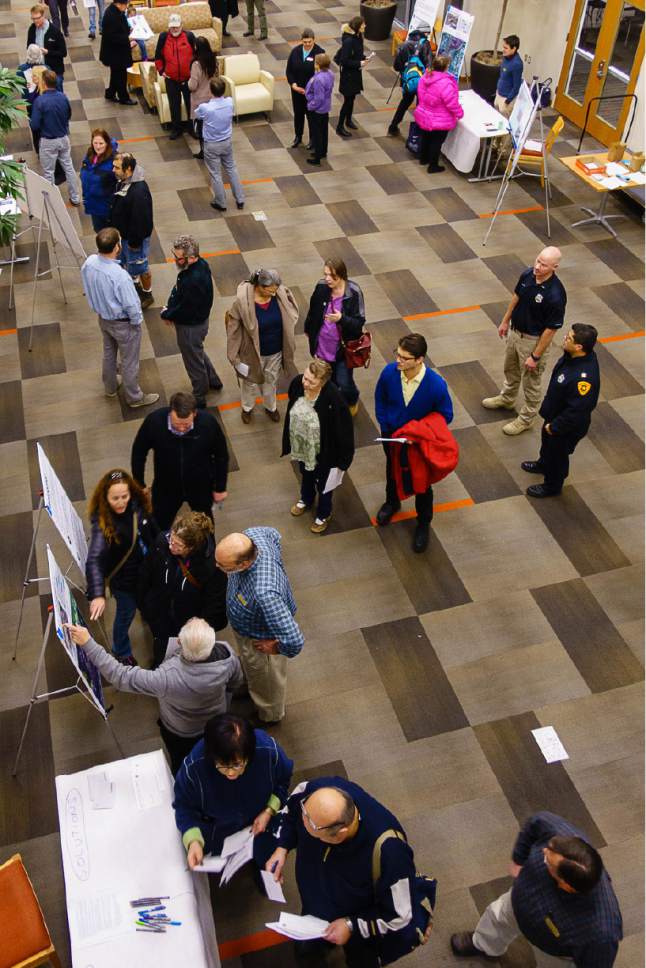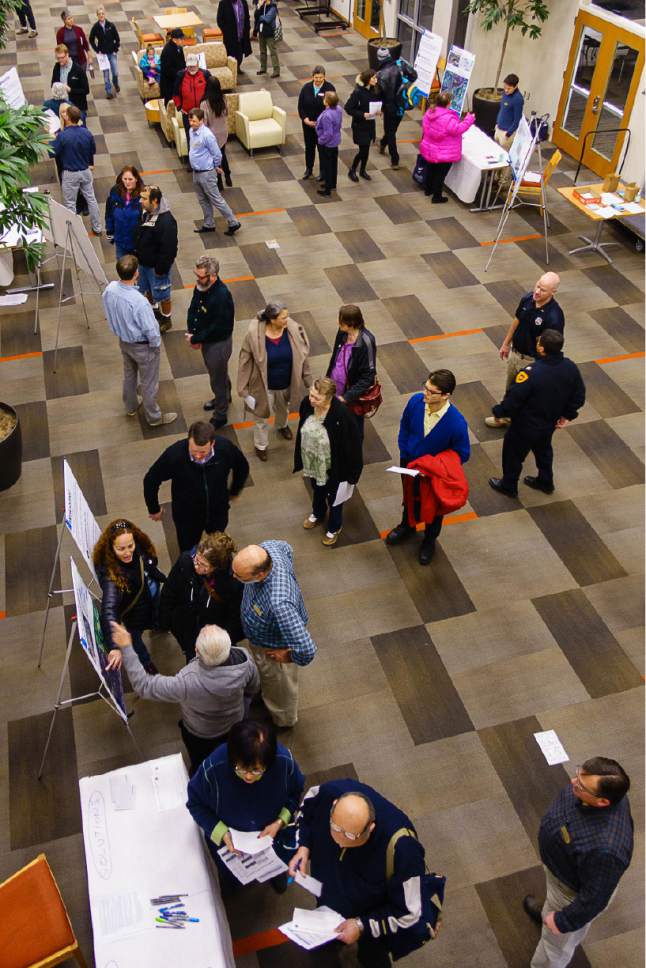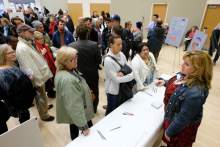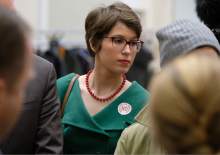This is an archived article that was published on sltrib.com in 2017, and information in the article may be outdated. It is provided only for personal research purposes and may not be reprinted.
The first of two workshops held by Salt Lake City on Wednesday at Salt Lake Community College's South Campus was filled by residents clustering around city employees and peppering them with hard questions — piling on after Salt Lake County Mayor Ben McAdams earlier Wednesday suggested that the city's most controversial choice, 653 E. Simpson Ave., should instead be used for affordable housing.
Emily Pennock said she bought a house 400 feet away from that site in 2015. A rotation through the room's dozen huddles left her questions unanswered, she said.
Civic Engagement specialist Robyn Stanczyk told Pennock: "I don't think anyone's going to get into why we picked one site over another site. That was sort of the reason why —"
Pennock interrupted: "Why we got cut out of the process in the first place."
Attendees were asked to jot down suggestions on a large sheet of paper next to a poster of each site.
At 653 E. Simpson Ave., under "SOLUTIONS," they wrote:
"Move it!"
"NO SITE ON SIMPSON" (x2)
"Find a more suitable location not in the midst of an already struggling neighborhood."
Michael Maloy, one of the city's senior planners, took questions as people waited to make their mark. These opinions could inform a zoning and conditional use process that in 653 E. Simpson Ave.'s case will likely take more than a year, he said.
Many were not ready to concede the site, though, wearing stickers that read "NO SHELTER ON SIMPSON."
"For the most part on the Simpson site, most people are saying just 'No,' just 'Not here,'" Maloy said.
A crowd of people surrounded Deputy Chief of Staff David Litvack and quizzed him on other site finalists' failings, or whether the city was no longer willing to hear feedback about the Sugar House site.
"As of yesterday, Mayor McAdams came up with a new concept," he said, laughing. "So I'm nimble and flexible."
Salt Lake Police Chief Mike Brown, in a smaller group, was asked if the police can move people whose presence intimidates the residents of a nearby dwelling.
"Well, they're people, and they have constitutional rights," he said. Brown gave out his card freely and said police presence would be increased in response to any rise in crime.
Standing by the entrance and calling upon attendees to sign up for his "Save Simpson" group was Robert Breeze, who said he owns property nearby on Green Street.
Breeze said he has 80 members on an email list. Tuesday night, he advised subscribers to attend Wednesday's meetings and "give only our negative opinions but in a polite way."
"DO NOT PLAY THEIR GAME by addressing issues such as color scheme, bicycle racks, etc.," he wrote. "[O]ur only comment is 'We don't want this shelter on Simpson [A]ve.'"
"Why do you feel that way?" he was asked at Wednesday's workshop by Ilauna Gurr, who six years ago moved into a condo a block away from The Road Home shelter at 210 S. Rio Grande.
Gurr later said that even living near Rio Grande's drug trade and its associated problems — and as somebody who isn't shy about telling dealers to do their business elsewhere — she has never felt afraid.
She heard a property owner near 653 E. Simpson talk at a recent public meeting about the future of his 18-month-old son and thought, "Every day, I see 18-month-old kids and younger in strollers, living in that environment."
But Gurr and her husband, John, told District 4 Council Member Derek Kitchen that the current shelter operated by The Road Home should be closed when four new sites come online, a stance taken by Salt Lake City Mayor Jackie Biskupski and area business interests and opposed — to a degree — by Salt Lake County Mayor Ben McAdams and Kitchen.
All sides have said they hope a new service model and the one-stop resources at new shelters will draw down the population to the point that they can close the aging shelter, but McAdams said earlier Wednesday that he won't enter a joint agreement to an "arbitrary" date.
John Gurr said that without a commitment to close Rio Grande shelter, the rest of the county and the state has no incentive to step up and provide alternative services.
Many opponents prefaced their conversations with city officials by saying they weren't a mere "NIMBY-ist," shorthand for "not in my backyard," and proceeded to explain how the homeless would be better served elsewhere.
Amy Buchanan said she resides around the corner from 653 E. Simpson and has seen her community become a better place to live through the years.
She attended one of the city's June public-engagement workshops, long before she knew she might live near a shelter, and was dismayed afterward that nobody called back about her suggestions.
She got a mailer that the city sent out to area residents last week, and asked questions Wednesday, but it was "just like the rhetoric that we've all heard," she said. "It's not anything in detail."
She now worries that her neighbors will leave because the city's model — billed as revolutionary and unique — remains unproven.
Said Buchanan: "You can't beta test in a neighborhood."
Twitter: @matthew_piper —
Community workshop
Salt Lake City will host one more workshop on the design and community impact of four new homeless shelters and resource centers to be built in Salt Lake City.
Jan. 18 • From 7 p.m. to 9 p.m. at Nibley Elementary School, 2785 S. 800 East


